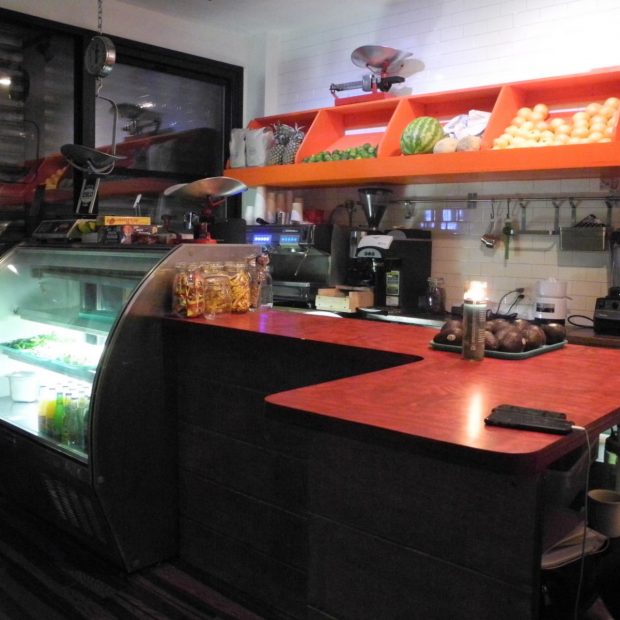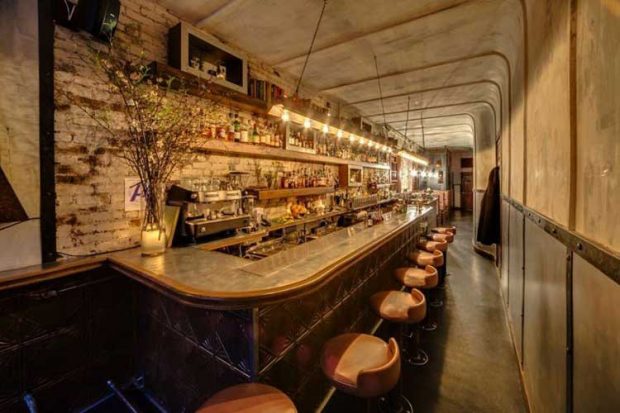
Alcohol was banned in the United States 100 years ago. That changed the country – just very different than expected. Today speakeasies, the illegal bars from Prohibition, are back in New York nightlife.
In the distance, the Chrysler Building sparkles through the New York night, and garbage bags and cardboard boxes are piled up on a gloomy side street in Manhattan. An inconspicuous dark gray door in the shadow of a metal grille bears the letters “AB”. It must be here. There’s no handle, and the knock is swallowed by the muffled babble of voices – a bit like 100 years ago when illegal bars became part of American culture.
READ: New York: That’s Why NYC Isn’t the Most Brilliant City in the World
In the early 20th century, an anti-alcohol alliance in the United States fought to put an end to beer and liquor. Against the will of many brewers of German origin, they were finally successful: on January 16, 1919, Prohibition was ratified. A year later, in January 1920, the ban on the manufacture, transport, and consumption of alcohol came into force.

View of the Mezcaleria La Milagrosa, which opened in 2017. The bar looks like a grocery store from the outside. Through the steel door, you can get access to the secret bar, also known as the “speakeasy”, after making a reservation by telephone.
“The primary reason for the movement was excessive drinking, especially among men,” explains Daniel Okrent, who wrote a book about Prohibition. Women, in particular, supported the ban – they became the victims of their husbands’ booze when they lost their jobs, brought home diseases, or became violent. Prohibition should change that. But instead of draining the states, the star of the unofficial pubs, the speakeasies, rose.
READ: Pollepel Island: New York’s Explosive Island in the Hudson River

It takes a while, but then the door swings open and a young woman comes out of the “Attaboy”. She speaks faster than others think. Thanks for the interest, but at the moment everything is full. “But I can call you if that changes.” No wonder, given that speakeasies are as popular in New York in the 21st century as they used to be.
There are dozens, if not hundreds, of these “secret” bars in the US east coast metropolis, and their revival promises visitors a particularly intimate atmosphere. A hidden place in the middle of the metropolis. Some are located in apartments in apartment blocks, others can be accessed through a restaurant or you need a password. They are usually full anyway.
Finally, the cell phone rings, and access to the “Attaboy” is granted. Behind the wooden bar, a stool is still free under a row of lights. The bottles are huddled against the wall, their amber-colored liquids flickering in the candlelight. “How are you, brother?” Asks the man behind the bar.
Then he hits a block of ice with a small chisel to trim it to the dimensions of the glass. The “Attaboy” is definitely not a place to take silly grinning selfies. It wants to be nebulous, bold, and stylish. Just like the competition. The bathtub in the “Bathtub Gin” is just as unsurprising as the porcelain cups in which you sip your drinks in the “Back Room”.
In the “Roaring Twenties”, the New York police estimated the number of speakeasies at 32,000. “Anyone who wanted to drink alcohol had no problem finding one,” explains Okrent. Even if consumption fell by around 30 percent with Prohibition, the US, with its population of more than 100 million at the time, could not even come close to being drained.
READ: Henna: From Ancient History to the Present Day
Instead, there was a significant change at the social level: while women were previously unable to visit the pubs, all visitors were welcome in the illegal bars. Music also found its way into the drinking rooms – according to Okrent, the speakeasies also marked the beginning of the jazz age.
Compared to their historical models, however, the speakeasies of modern times are not very authentic. “The speakeasy culture that is popular today is based on the ideas of Hollywood,” says the writer. In fact, many bars didn’t have to hide at all despite Prohibition. “They just had to bribe the local cops, which was easy.”
Corruption flourished at that time as well as the illegal production and distribution of alcohol, legendary gangsters like Lucky Luciano, Meyer Lansky, Frank Costello, and Al Capone made careers. Mainly because of this, the resistance to prohibition grew. In addition, in view of the economic crisis, income from an alcohol tax was urgently needed. On December 5, 1933 – after around 13 years – Congress finally ended Prohibition again.
The 2020 speakeasies are more like speakeasy-themed bars – look secret but are easy to find using the internet. A nice illusion after work, a Disney World for drinkers. But they still have charm. The chunk of ice in the glass has noticeably melted, the gin-based “Cavalier” has risen from the palate to the head. The bill comes in cursive on an index card: “A nineteen dollar drink” is written on it. That was also different 100 years ago.
The US lifestyle portal “Thrillist” has published a list of the best speakeasy bars in various parts of the metropolis. These are:
Like us on Facebook for more stories like this: